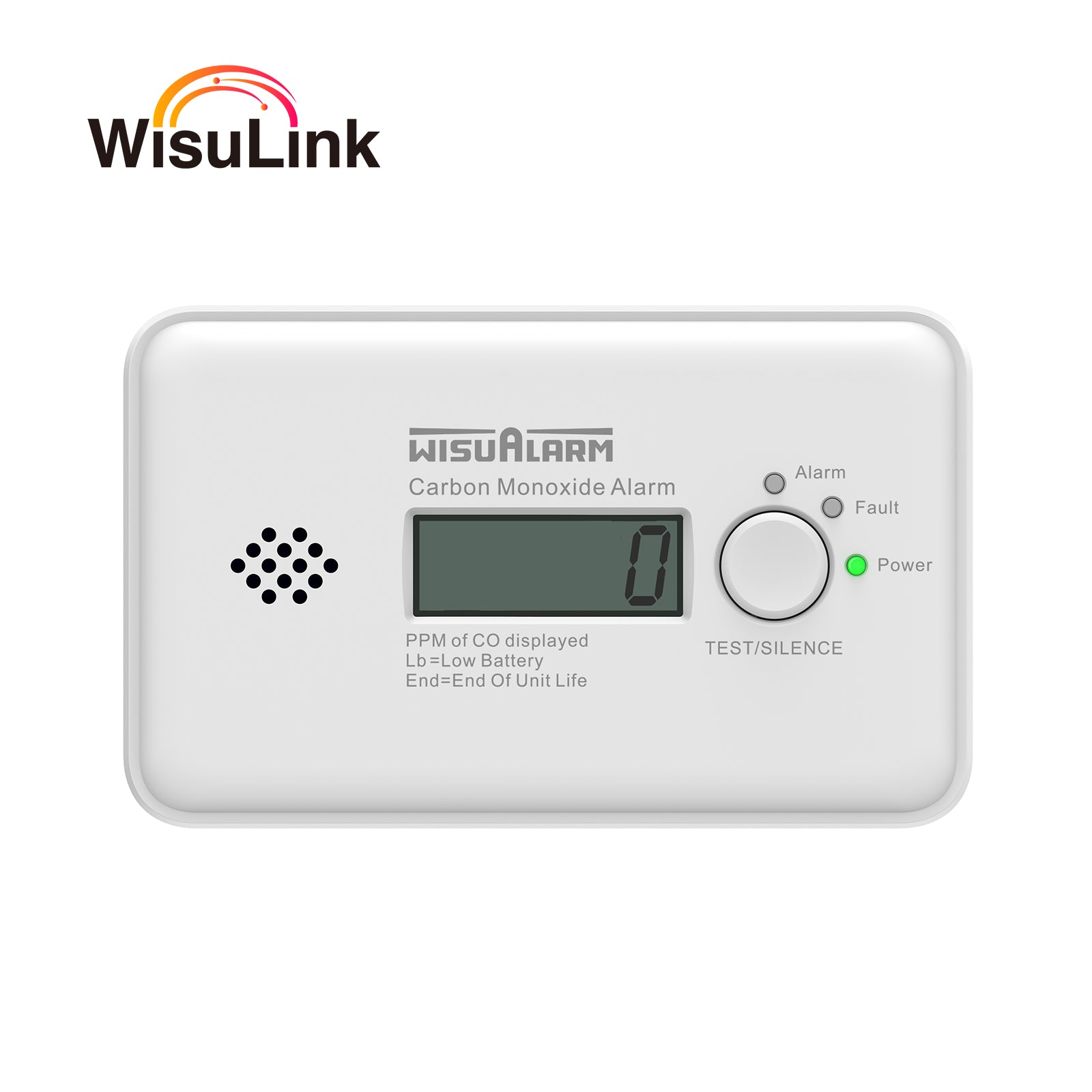Scotland has some of the strictest domestic fire safety laws in the UK—all designed to protect households from the devastating impact of fires. For homeowners, renters, and landlords alike, understanding smoke alarm legal requirements isn’t just a box-ticking exercise: it’s a legal obligation, and non-compliance can lead to fines of up to £5,000.
Whether you live in a Edinburgh flat, a Glasgow terraced house, or a rural Highland home, this guide breaks down Scotland’s smoke alarm rules, who’s responsible for compliance, and how to ensure your home meets every standard.
The Core Legal Framework: Scotland’s 2022 Fire Safety Update
Scotland’s smoke alarm laws were overhauled in February 2022 (under the Fire (Scotland) Act 2005 and supporting regulations) to reflect modern housing trends—like multi-story apartments and home working—and reduce fire-related injuries. The key change? Mandatory interlinked smoke and heat alarms in nearly all domestic properties, making Scotland the first UK nation to enforce this standard for existing homes (not just new builds).
Unlike England and Wales, where rules vary by property type, Scotland’s laws apply uniformly to:
- Owner-occupied homes (detached, semi-detached, flats)
- Private rented properties (landlords must install and maintain alarms)
- Social housing (councils and housing associations must meet standards)
- Temporary accommodation (stays over 28 days require compliant alarms)
Only listed buildings or properties with extreme structural limitations (e.g., historic thatched roofs) may qualify for exemptions—and even then, approval from Historic Environment Scotland and the Scottish Fire and Rescue Service (SFRS) is mandatory.
What Exactly Do Scotland’s Laws Require?
The regulations specify what alarms you need, where to install them, and how they must connect. Here’s the breakdown:
1. Number and Type of Alarms
Every Scottish home must have:
- 1 smoke alarm in the main living area (e.g., living room, open-plan kitchen-living space)—where families spend the most time.
- 1 smoke alarm on every floor (e.g., ground-floor hallway, first-floor landing)—smoke rises, so alarms on each level ensure early detection.
- 1 heat alarm in the kitchen—smoke alarms here trigger false alerts from cooking steam or grease; heat alarms only activate when temperatures hit 58°C (the threshold for real fire risk).
If your home has a garage attached to the main building (common in suburban Scotland), you’ll also need a heat alarm in the garage—to detect fires from faulty wiring or stored chemicals.
For homes with fuel-burning appliances (e.g., gas boilers, wood-burning stoves, oil heaters)—which 72% of Scottish households use, per Energy Saving Trust data—a carbon monoxide (CO) alarm is mandatory. CO alarms don’t need to be interlinked, but they must be installed within 1 meter of the appliance.
2. Interlinking: Non-Negotiable for Scottish Homes
The biggest difference between Scottish and UK-wide rules is mandatory interlinking. All smoke and heat alarms must be connected so that if one detects danger, all alarms sound—whether you’re in the bedroom, kitchen, or attic.
Interlinking can be done in three ways (all compliant in Scotland):
- Wireless (radio frequency): The most popular choice for existing homes—no drilling or rewiring needed. Alarms connect via 868 MHz signals (the EU-standard frequency for fire safety devices).
- Hardwired (mains-powered): Common in new builds—alarms link via electrical wiring, with backup batteries for power cuts.
- Hybrid: A mix of wireless and hardwired (e.g., mains alarms on the ground floor, wireless on the first floor).
3. Installation Rules
Alarms must be fitted correctly to meet legal standards:
- Mount on ceilings: Smoke rises, so ceiling placement is mandatory (wall mounting is only allowed if ceiling installation is impossible, e.g., due to beams).
- Keep clear of obstacles: At least 30cm away from walls, lights, vents, or curtains—air currents or dust can trigger false alarms.
- Kitchen specifics: Heat alarms must be at least 3 meters from cooking appliances (e.g., hobs, ovens) to avoid steam interference.
- Installed by a “competent person”: For hardwired alarms, this means a qualified electrician. Wireless alarms can be installed by homeowners, but you must follow the manufacturer’s instructions (SFRS recommends keeping a copy for proof of compliance).
4. Maintenance and Replacement
Laws don’t stop at installation—you must keep alarms functional:
- Test weekly: Press the “test” button; all interlinked alarms should sound. If not, replace the battery or alarm immediately.
- Battery rules: Sealed lithium batteries (last 10 years) are preferred—no more frequent battery changes. Replaceable alkaline batteries are allowed but must be swapped every 6 months.
- Replace every 10 years: Smoke and heat alarms expire after a decade (check the manufacture date on the back). Old alarms have degraded sensors and won’t detect smoke reliably.
Who’s Responsible for Compliance?
Scotland’s laws clarify responsibility to avoid confusion:
- Homeowners: Fully responsible for installing, testing, and replacing alarms in owner-occupied properties.
- Landlords: Must fit compliant alarms before a tenant moves in, test them annually, and replace any faulty devices. Tenants must report broken alarms within 24 hours (failure to do so could make them liable).
- Social housing providers: Councils and housing associations must install and maintain alarms in their properties—tenants only need to report issues.
- Property sellers: While not legally required to install new alarms, sellers often update them to meet buyer expectations (and avoid delays in conveyancing).
Common Myths About Scotland’s Smoke Alarm Laws
Let’s debunk misconceptions that trip up Scottish households:
- “I only need one alarm for a small flat.” No—even studio flats need a smoke alarm and a kitchen heat alarm (interlinked). Size doesn’t exempt you.
- “Wireless alarms aren’t as good as hardwired.” False—Scotland’s laws treat both equally, as long as they’re interlinked. Wireless alarms are often easier to install and just as reliable.
- “CO alarms need to be interlinked.” No—CO alarms only need to alert occupants to carbon monoxide, not connect to smoke/heat alarms. But interlinking them is allowed for extra safety.
Wisualarm: Smoke Alarms Built for Scottish Compliance
If you’re updating your home to meet Scotland’s strict laws, Wisualarm’s smoke and heat alarm range is designed to check every legal box—while adding convenience that fits Scottish lifestyles.
Here’s why Wisualarm works for Scottish homes:
- 100% Scotland-compliant: All alarms meet the EU standard adopted in Scotland and support wireless interlinking via 868 MHz signals—no rewiring needed for older homes.
-
Perfect for Scottish living:
- Kitchen heat alarms: Ignore steam from porridge or boiling water (common in Scottish kitchens) but trigger fast at 58°C.
- 10-year sealed batteries: Skip 6-month battery changes—ideal for busy families or homeowners in rural areas where frequent maintenance is a hassle.
- Multi-floor coverage: Kits include 2 smoke alarms (for living room and landing), 1 kitchen heat alarm, and 1 garage heat alarm—everything a standard 2-story Scottish home needs.
- Easy to install and test: Wireless setup takes 10 minutes (no electrician required), and the one-touch test button checks all interlinked alarms at once.
- Smart features (optional): Premium models connect to the Wisualarm App, sending real-time alerts to your phone if an alarm sounds—great for Scots who travel or have second homes in the Highlands.
Wisualarm even includes a Scotland compliance checklist with every kit, so you can confirm you’ve met all legal requirements before testing.
Final Steps to Stay Legal (and Safe)
- Audit your current alarms: Do you have interlinked smoke/heat alarms on every floor? A heat alarm in the kitchen? A CO alarm near fuel appliances?
- Replace old devices: If your alarms are over 10 years old, swap them for Wisualarm’s compliant models.
- Test weekly: Make it a habit—set a phone reminder to press the test button every Sunday.
Scotland’s smoke alarm laws aren’t just red tape: they’re life-saving. Between 2022 and 2024, the SFRS reported a 38% drop in fire-related injuries in homes with compliant interlinked alarms.
With Wisualarm, you can meet the law without compromising on convenience or reliability. Ready to secure your Scottish home? Visit Wisualarm’s UK site to browse their Scotland-approved alarm kits.



















































Leave a comment